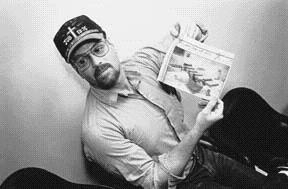 Only
The Governor Can Save Philip Workman
Only
The Governor Can Save Philip Workman Case account by Jefferson Dorsey and Fabian Gastellier, with thanks to NewsChannel 5 for its work on the case.
Philip Workman received a stay of execution on 4/4/2000 due in larger part to the activists involved and the extraordinary work on the part of Philip's attorneys.
 Only
The Governor Can Save Philip Workman
Only
The Governor Can Save Philip Workman
Case account by Jefferson Dorsey and Fabian Gastellier, with thanks to NewsChannel
5 for its work on the case.
Edited by Stormy Thoming-Gale
{Editor's note: This account has many key factors of wrongful imprisonment -- perjured testimony, a coerced witness, prosecutorial misconduct, poor legal representation at trial, and possible police cover-up. As this could be the first execution in Tennessee since 1960, Philip's case attracted much local media and has received attention from a prominent attorney. Exculpatory ballistic evidence was discovered in 1990, when current defense attorney Chris Minton took the case for post-conviction, yet has never been heard in court. However, Philip is still likely to be executed -- in OUR names. In researching this story, I became outraged by this injustice, and hope that this story will persuade you to become active on Philip's behalf. At the end of his account, you will find several suggestions of ways you can help, and resources where you can find more information. STG}
Please read the update on Philip's case.
"Our pitch is, the guy is innocent," Chris Minton, Philip's attorney, says. "The guy did not commit a capital offense. The state should not execute somebody who did not commit a capital offense. But we're dealing with allegations of police misconduct, and it's hard for the courts to swallow."
4 Facts of Innocence The bullet was not from Philip’s gun. Eyewitness recanted testimony -- supported by facts of the case. Eyewitness who never testified places another firing weapon at the scene . Perjury committed by Officer Parker when denying he had a shotgun at the scene. |
Philip Workman’s date of execution is set for April 6th, 2000.
The Crime
On August 5, 1981 in Memphis, Philip Workman went into a Wendy's restaurant and committed robbery with a .45 caliber semi-automatic pistol. What happened next remains somewhat of a mystery. Philip Workman doesn't remember very well, as he was under the influence of drugs that night. His account of events follows.
Philip waited until closing, approximately 10:00 p.m., then pulled his pistol and walked the employees into a back room, telling them to stay put. During the robbery, an employee tripped the silent alarm. Seeing a police cruiser pull up, Philip went outside and talked with the officer, Lt. Ronald Oliver. Lt. Oliver assumed Philip was an employee, and thought the alarm was a false call. When Lt. Oliver turned to look at Officer Stoddard's arriving cruiser, Philip started running across the parking lot. Philip tripped on a curb and fell into the adjoining parking lot. Then, he yelled "I give up!" and tried to pull the gun from his pants to give to the officers who were running up behind him.
As Philip tried to surrender his weapon to the officers, he was hit over the head with a flashlight, opening a wound that required seven stitches. At that moment, Philip's pistol went off, aimed straight up into the sky. Suddenly, Philip was surrounded by gunfire, and he began to run again. As he ran, he cocked the .45 caliber semi-automatic, which ejected a live round. Philip tripped, again firing his pistol up into the air.
As you will see, the police investigation of the crime scene supports Philip's account. Two spent cartridges and a live round were found in the vicinity of the struggle and shooting. Another spent cartridge was found across the auto store parking lot, where all the witnesses saw Philip stumble and fire straight up into the air.
Philip hid behind houses as the Memphis police blanketed the area searching for him. They used dogs, helicopters, cruisers, and officers on foot. Finally, a civilian spotted Philip hiding beneath a truck. Soon after, officers found Philip in the bushes, covered with blood from his head wound. Police ordered the dogs to attack him, and then officers beat him further. Philip was taken to a hospital, where he was treated for facial cuts, the wound on his head, numerous bruises and, significantly, a shotgun wound to his buttocks.
At the scene of the shootout, Lt. Oliver lay dying from a bullet that passed completely through his torso. Officer Stoddard received a wound to the fleshy part of his upper arm. The police testimony offered at trial differed substantially from Philip's.
Officer Stoddard claimed that Lt. Oliver grabbed Philip, and Stoddard joined in the struggle. Stoddard claimed he was "belly-to-belly" with Philip. He said that Philip shot him in the arm at point-blank range. Officer Stoddard heard several more shots, then saw Lt. Oliver fall to the ground wounded.
Officer Stoddard claimed that Lt. Oliver then shot wildly, emptying his six-shot revolver. He also claimed that the only shots fired came from Lt. Oliver's revolver and Philip's pistol. However, Officer Stoddard did state that he did not actually see Philip shoot Lt. Oliver.
Officer Parker was the next policeman to arrive. He claimed that he heard two shots, ran around Wendy's and saw Philip shoot Stoddard. He said that Lt. Oliver had already been shot. Officer Parker also said he never fired a shot. Both officers claim that Philip and Lt. Oliver were the only people shooting and that Lt. Oliver did not shoot until he had been shot.
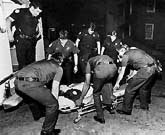 Memphis police officers watch with concern as paramedics lift the
fatally wounded Lt. Ronald Oliver into an ambulance in this 1981 photo from the Memphis
Memphis police officers watch with concern as paramedics lift the
fatally wounded Lt. Ronald Oliver into an ambulance in this 1981 photo from the Memphis
The Trial
Shelby County public defenders represented Philip at his trial. There were several key elements they left untouched. They did not investigate the wound that killed Lt. Oliver, nor probe key witness Harold Davis. They did not procure expert assistance on pathology or ballistics. In fact, they told Philip that his guilt was a foregone conclusion because public opinion was so inflamed against him. He was told that he had a tiny chance of receiving a life sentence -- but only if they didn't actively defend against his guilt. At the trial, 18 years ago, Philip's public defender told the jury its decision would be "whether it is murder in the first degree or murder in the second degree." Philip Workman's innocence was never considered.
The prosecution had two key points. The first was the bullet.
During his opening argument, prosecutor Eddie Peterson told jurors, "You will hold in your hands the bullet that killed Lt. Oliver." The bullet that allegedly killed Lt. Oliver -- a .45 caliber hollow-point -- came from Philip's gun, according to an FBI expert. However, FBI experts also admitted there was no trace of blood, human tissue or any other evidence linking Philip Workman to the crime.
Dr. Bell performed the autopsy for the government and testified at trial. He told the jury that Lt. Oliver was killed by a through-and-through shot, an analysis echoed by every expert who examined the evidence. In other words, the bullet that killed Lt. Oliver passed completely through his body. Dr. Bell's autopsy report also showed that the entrance wound was twice as wide as the exit wound.
The police recovered Philip's weapon after the robbery, and found that it was loaded with .45 caliber, hollow-point ammunition. These low-velocity bullets have a thin metal skirt that falls off behind the bullet when it hits a target. The soft metal immediately expands, which transfers the kinetic energy into the object it strikes. It is extremely rare for this type of bullet to pass through a body; it is designed to stop inside, protecting anyone behind the target.
Before the trial, to compare ballistics, FBI experts took Philip's pistol and fired the same ammunition as Philip had into a water tank. The bullets expanded to twice their original diameter. A water tank is used for ballistics tests because water should not deform the projectile. But even the water caused the low-velocity hollow-points to mushroom.
Dr. Bell's testimony virtually destroyed the prosecutorial theory that the bullet came from Philip's gun. In fact, in the prosecutor's closing argument, he did not attempt to say the bullet from Philip's gun was the fatal bullet.
New Evidence Regarding the Bullet
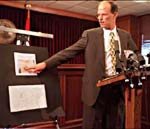 Jefferson Dorsey, defense
attorney, points to a diagram of ballistic tests that he says suggests Workman didn't fire
the fatal shot that killed Memphis police officer Ronald Oliver.
Jefferson Dorsey, defense
attorney, points to a diagram of ballistic tests that he says suggests Workman didn't fire
the fatal shot that killed Memphis police officer Ronald Oliver.
In 1995, Philip's lawyers obtained an affidavit from Georgia's chief medical examiner, Dr.Kris Sperry, who said that silver-tip, hollow-point bullets expand upon impact and leave an exit wound larger than the entrance wound. The pathologist noted that the bullet that killed Lt. Oliver passed through his body and left an exit wound smaller than the entry wound. That bullet was never found.
Thanks to Dr. Wecht and Dr. Sperry, two well-known pathologists hired by the current defense team, we now know that the bullet that killed Lt. Olivier couldn't have been a .45 caliber hollow-point bullet such as the one that came from Philip's gun. Though the ballistic test showed Philip's gun couldn't have caused the fatal wound, it was too late to introduce the test as new evidence.
In an analysis prepared for the defense lawyers, Dr. Wecht concludes: "Therefore, based on the path that the bullet took, the fact that the bullet exited the body, and the fact that Philip was using a .45 caliber pistol loaded with aluminum jacketed, hollow-point bullets, I do not believe that it was Philip's gun that fired the shot that fatally wounded Lt. Oliver."
Dr. Sperry, who works for the Georgia Bureau of Investigation, also notes that "every wound I viewed indicated that the .45 silver tip hollow-point bullet expanded upon entering the human body involved. In approximately 90% of the wounds I viewed, the .45 silver tip hollow-point bullet did not exit the human body it entered."
He concludes that Lt. Oliver's wounds "are inconsistent with every wound I have seen created by a .45 silver tip hollow-point bullet." Dr. Wecht recently stated in an interview that the wound to Lt. Oliver is entirely consistent with the high velocity ammunition used by the Memphis police at the time of the shooting.
The bullet that killed Lt. Oliver passed in a single path through the heart, both lungs, the stomach and the diaphragm, before exiting. Recently, a judge opined that a bullet fragment might have caused the exit wound. However, a fragmented bullet would create additional missile paths. No fragment of bullet would have the energy to pass through the body and organs, creating the damage that the autopsy revealed, and then exit. Dr. Bell examined the chest cavity and the organs, and performed a laparotomy.
His autopsy showed that there were no fragments of bullet anywhere, including in the blood taken from the chest cavity. No expert has ever claimed that the bullet fragmented. Don Strother, a former Shelby County prosecutor who helped put Philip on death row, attempted to explain the smaller wound by arguing that "the bullet may have struck something, and only a fragment of the bullet exited the body."
The Court of Appeals rejected Strother's theory, stating, "If a .45 caliber hollow-point bullet had gone all the way through Lt. Oliver's chest and emerged in one piece, we have no doubt that the exit wound would have been larger than the entry wound."
"Essentially, they are saying that Philip Workman is innocent," said Philip's lawyer, Jefferson Dorsey. Still, the 6th Circuit refused to order a hearing on ballistic issues.
The Prosecution's Other Key Element
Memphis native Harold Davis appeared, seemingly out of nowhere. As the prosecution's only witness at the trial, Harold Davis sealed Philip's fate.
Harold Davis testified that he was parked outside the Wendy's restaurant when he saw the altercation and witnessed the shooting -- and that the shooter was Philip Workman. Harold Davis "virtually saw the whole thing," a prosecutor told jurors.
Harold Davis testified that he saw Philip Workman intentionally point his gun at Lt. Oliver and shoot. Mr. Davis left the witness box to demonstrate how coldly and deliberately Philip had shot the veteran policeman. Mr. Davis' testimony did not match the crime scene. In fact, it matched only Officer Stoddard's account of the incident.
There was a problem with this "eyewitness testimony." The police report on the crime scene does not note the presence of Harold Davis. Five other people near the scene say they do not remember seeing Mr. Davis. Most notable is that Mr. Davis' car wasn't visible in photos taken of the crime scene, and it didn't show up in police diagrams.
There is more. No one saw him, not even the police officer who had been warned to be on the lookout for an African-American man who had been robbing local Wendy's restaurants. "I didn't see him," Officer Stoddard admits.
A source deeply involved in the police investigation told NewsChannel 5, "I never believed that Harold Davis was there.
Who is Harold Davis?
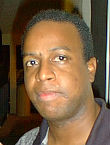
While no blame is to be put on Mr. Davis, a close examination of his testimony is
imperative to finding the truth. Without Mr. Davis' testimony, Philip Workman would not be
two months away from execution.
Harold Davis came forward the day after the shooting, saying he had witnessed the whole thing. Davis was a drifter with a history of drug abuse. At the time of the crime, he was unemployed.
A close friend of Davis, Vivian Porter, told NewsChannel 5 that she's certain Davis lied. She said she was confident of this because she was with Harold Davis the night of the crime. Vivian Porter and Davis were out buying drugs when they were stopped by a police officer. As the officer walked up to their vehicle, he received an emergency call, returned to his car and sped off.
Later, Vivian Porter and Harold Davis drove by the Wendy's crime scene, and realized the officer had been responding to the shooting. "It was kind of taped off, you know," Porter said. "So that told me that whatever had transpired on the parking lot had already happened."
Harold Davis' own sister, Jacqueline Davis Moden, told NewsChannel 5 that Davis was a drug addict who made money by "professional witnessing." She said he scanned news reports, looking for details about crimes. "Then claiming to have personally witnessed it" to collect the reward money. After he went to the police in Philip's case, Davis suddenly had money, she added. "A large sum of money, I don't mean five or ten dollars. But he had a substantial amount of money that was questionable to how he would have come about it."
There is no proof that Mr. Davis ever received a reward, even if Vivian Porter -- who now runs a Christian drug rehabilitation center -- added, "When he called to say he witnessed it, it had to have been about money. Because when you are in your addiction, sometimes you'll do anything to get your drugs."
When Davis came to the police, he signed a statement describing the shooting in great detail. According to his own account, he would not have had a frontal view of the crime scene. How did he get those details?
In September 1999, Harold Davis suddenly recanted his statement, saying Philip Workman was not guilty of the murder of Lt. Ronald Oliver.
Harold Davis admitted that he lied about Lt. Oliver's murder. Mr. Davis said that he didn't see it at all. In October, defense lawyers Chris Minton and Jefferson Dorsey tracked him to a Phoenix motel. In a videotaped interview, Davis told the lawyers he was not in the Wendy's parking lot on the night of the shooting. In answer to the question: "Did you see Philip Workman shoot the police officer?" Davis replied "No, I didn't." Mr. Davis added that he had been drinking alcohol and smoking marijuana at the time. Harold Davis then signed a statement to recant. In this statement, he said that Memphis authorities had coerced him to testify against Philip Workman. Davis said he picked Philip's picture from a photo lineup prepared by police because he had already seen the defendant's photograph in a Memphis newspaper. He added that he did not want to testify against Workman, but police threatened him: "I could get arrested as a hostile witness, and they could stick me in a jail until the trial was over with." Davis also said that prosecutors paid his hotel and food expenses while he was in Memphis for the trial.
Davis couldn't imagine Philip coming so close to death in a state that hadn't executed anyone in forty years. After being released from jail, Davis agreed to one last videotaped interview with defense lawyers. On that tape, the former prosecution witness breaks down into tears over the prospect of Philip's execution. "I don't want to see him die for something he didn't do," Davis cries. "I was hoping it wouldn't come to what it came to."
In the same videotape, Davis claims he was in the neighborhood when the shooting occurred, but didn't see it. This is in contradiction with Vivian Porter's testimony stating they drove by "later on during the crime scene." Still, for reasons he doesn't explain, Davis went to the police the next day.
"They basically told me what happened," he says. "And would you be willing to say this happened. I said, I didn't see all that. They said, well this is what you are going to say." Davis says he agreed. But when it came time for Philip's trial, Davis says he tried to back out. "I kept telling the prosecutor I really don't feel good about this," Davis adds. "Late one night, a big white guy came and knocked on my door. He said he had a message for me, and that if I changed my testimony in any kind of way, people I love and care about could disappear just like I could." Harold Davis has forsaken home and Tennessee for 19 years, staying on the road to avoid the danger he completely believes will follow him.
"No man should be put to death based on perjured testimony," Philip's lawyer, Jefferson Dorsey, says. "We know that Harold Davis' testimony was perjured."
Officer Stoddard admits that Davis' claims trouble him somewhat. The retired officer says he pulled out a stack of old newspaper clippings after he dreamed that he saw Davis' car in a crime scene photo. "But it's not there in the picture?" a reporter asked him. "No," he replied, "And I don't recall seeing it. I just dreamed that I did."
Still, former prosecutor Don Strother denies anyone pressured Davis to say anything. In fact, he says Davis must be lying now. "I believe now, and I believed then, that Mr. Davis told the truth," Strother says. "I believe he testified under oath truthfully in court."
However, defense lawyers argue that Davis' emotions are real, and the crime scene evidence backs up his current claim that he wasn't even there. Mr. Dorsey says this raises a disturbing question about police investigation. "Why go to all the trouble to threaten, to coerce somebody into committing perjury in a capital trial? The only solution in my mind is, there is something they feel the need to hide."
If Philip Workman didn't fire the fatal shot, who did?
Witness Who Never Testified
In a trial transcript of over 1,000 pages, Officers Stoddard and Parker and prosecutors repeatedly said only two people fired guns outside the restaurant on the night Lt. Ronald Oliver was killed -- Philip Workman, the murderer, and Lt. Oliver, the victim.
A civilian witness named Steve Craig went to the crime scene when he saw his friend, Officer Stoddard, headed that way. Mr. Craig stayed inside his vehicle and ducked down for cover during part of the shooting. Unfortunately, he was unable to testify at the trial due to a sudden hospitalization for appendicitis. Four years ago, in a sworn affidavit, Steve Craig made a statement that places a firing shotgun in the vicinity. More precisely, Craig said he saw Officer Parker fire a shotgun at Workman. An article in the Memphis Commercial-Appeal also reported that police say Parker "exchanged shots" with Workman. Steve Craig also stated that police told him, "there was no need to talk about this ... unless it was with someone from the department."
This statement raises questions about Officer Parker's trial testimony. Officer Parker testified at Philip's trial that he couldn't reach his pistol to return fire. Parker is now an assistant U.S. Attorney.
Officer Parker told police investigators that he saw Philip Workman shoot Officer Stoddard after Lt. Oliver hit the ground, mortally wounded. That statement was false. At trial, Officer Parker said he was mistaken, after learning Officer Stoddard already had been shot by the time Lt. Oliver went down. Emergency room treatment records show that Philip had shotgun wounds to his buttocks. It would not have been impossible to identify the bullet that wounded him. No tests were done because it was assumed that the gun and bullets belonged to Lt. Oliver.
The type of shotgun shell used by police had nine pellets. Each metal pellet, called 00 (double-aught) buckshot, is the shape and size of a large pea. The metal balls stay together when shot at close range. They spread out and hit multiple targets if shot from a distance. A ballistics expert who filed an affidavit for Philip Workman in an appeal said Oliver was killed by a shot that went in one side of his upper torso and out the other.
"It's pretty common for 00 buckshot to exit the body," said a wound ballistics consultant not connected to the case. "Front-to-back (entry and exit wounds) is more common than side-to-side."
Officer Parker was also connected to the shotgun in a police report written by Officer Otis W. Stewart 18 years ago. Stewart said he saw Parker carrying a shotgun as he ran across the parking lot after Philip. The police reports drafted immediately after the incident state that there was an exchange of gunfire between police and Philip, and the "officers" were firing.
Police Officers Stoddard and Parker remained mute on the subject at the trial. No retrial has been possible, because at the time of Mr. Craig's affidavit, Harold Davis had not yet recanted his perjured testimony.
The 6th U.S. Circuit Court of Appeals found the allegations "troubling," but decided they weren't relevant because Craig said he saw Parker shoot only after Lt. Oliver had been shot.
Philip's lawyer, Jefferson Dorsey, says: "It's the middle of a crime scene. Weapons are being fired. I'm not sure the officers on the scene knew exactly what was going on -- to be charitable to them. Maybe they believed they didn't fire."
In a struggle, many things can happen. What if Lt. Oliver was killed by "friendly fire"? Jurors who sentenced Workman to death never heard evidence that someone else may have fired the fatal shot, and they certainly never knew that the only witness who testified that he saw Workman shoot the officer may have been coerced by police into giving false testimony.
Former prosecutor Don Strother was asked if it mattered who fired the fatal shot, if Workman was responsible for the situation that led to Oliver's death. He replied, "That would be for the jury to decide."
In October 1999, Lida Springfield, who was a juror at the trial, said, "Now that there is doubt, there is no way that I could have voted for the death penalty."
Philip's lawyers have gotten affidavits from five of the twelve trial jurors who said they would not have voted to sentence Philip to death if they had known that recently-conducted ballistics analyses cast doubt on whether he fired the fatal shot.
What has happened in these last few months? The 6th US Circuit Court of Appeals in Cincinnati ruled in May 1999 that if Philip has "claims of actual innocence, they were discovered too late in the day for a new trial motion."
The Appeals Court recommended that Philip present his claims of innocence to Governor Sundquist, in a request for executive clemency. As a defendant gets further into the appeals process, the courts actually make it harder to present new evidence. Nashville lawyer and legal scholar David Raybin said, "It's very difficult to get a judge to buy recanted testimony. The biggest obstacle would be to convince a judge why this person recanted." He added, "One of the most important questions is whether or not the government was aware of, or responsible for, incorrect testimony."
It is unusual for the head of the state post-conviction defender's office to take over the legal lead in a death penalty case, but that is exactly what Donald Dawson decided to do. He asked the Supreme Court to request clemency from the Governor for Philip Workman, according to court documents. "You can close your eyes to the evidence that perjured testimony condemned Workman, and order Tennessee's first execution since Dwight Eisenhower was president," he said. "Or you can acknowledge that no man should be sent to his death based on false evidence."
Donald Dawson said he took over the lead because he was appalled by the speed at which this case was moving toward execution. His assistants had previously handled the case. "There is clear evidence that perjured testimony was used to secure a guilty verdict and death sentence," he added. "I felt it was necessary to make a plea to the court."
In this plea, Dawson asked the Supreme Court to recommend that Governor Don Sundquist commute Philip's death sentence to life imprisonment. "You, in every literal sense, hold Philip's life in your hands," Mr. Dawson said.
One judge replied that Dawson "unfortunately ... injected personal opinion, knowledge and belief" into his plea and "purported to lecture this court concerning its own sense of conscience, duty and obligation." Dawson replied in turn, "Somebody needs to remind the attorney general's office that they have a duty to do justice, not just to kill Philip Workman."
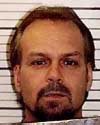 Now, Philip Workman
has exhausted all his legal appeals.
Now, Philip Workman
has exhausted all his legal appeals.
There are many people involved in trying to stop Philip's execution. Amnesty International recently sent out an "Urgent Action Request" asking people to send letters, faxes and e-mails to Governor Sundquist requesting clemency on Philip's behalf. The addresses will follow this article.
Nationally known death penalty lawyer Lawrence Marshall is also getting involved in the effort to save Philip from execution. Marshall, a Northwestern University Law School professor who has helped to free ten men from Illinois' death row since 1987, has met, consulted and held a press conference with Philip's lawyers.
Marshall reviewed the evidence against Philip, and concluded that executing him "would be a grave miscarriage of justice."
Tim Chavez, a columnist for The Tennessean, is an avid supporter, devoting many columns to the questions arising from Philip's case. Local newspapers and the New York Times Sunday Magazine have published articles about Philip.
A local television investigative reporter, Phil Williams, who convinced his station to support an in-depth series on Philip's plight, has also helped the mission to stop Philip's execution. The series aired for several days on News Channel 5, a Nashville CBS affiliate, and Williams continues to televise reports. The station has devoted several hours of broadcast time to the story, including an interview with Philip and four call-in shows devoted to his case.
Later, Phil Williams used several pieces he had filmed to create a half-hour documentary, which aired in early January of 2000. Copies are available for private use.
Philip's attorneys recently met with Lt. Oliver's only child, a daughter, and her mother, Oliver's ex-wife. Both women strongly believe that Philip Workman should not be executed. Oliver's daughter even videotaped a statement asking the Governor to grant clemency and commute Philip's sentence. Even with media and legal support, the only viable avenue to save Philip's life is through clemency. The Governor of Tennessee is probably the only person who can stop this irrevocable injustice. It is urgent that he hear from people everywhere who oppose this execution.
Send letters, faxes or e-mails to:
GOVERNOR DON SUNDQUIST
Phone: (615)741-3212
Fax: (615) 532 9711
e-mail: dsundquist@mail.state.tn.us
Board of Paroles
1719 West End Avenue, 5th Floor
Phone (615) 963-1200
Resources:
The Tennessean (http://www.tennessean.com) search for articles relating to his case.
Philip Philip’s Webpage: http://maxpages.com/saveworkman
Sign his online petitions:
http://www.e-thepeople.com/petition.cfm?PETID=309231 and
http://stopbarbarie.tripod.com/index-3.html
Interestingly, the Tennessee Court of Criminal Appeals recently overturned the death sentence of another inmate, Erskine Johnson, because Shelby County prosecutors withheld evidence that someone other than the defendant fired a shot that grazed an innocent bystander.
© Justice Denied